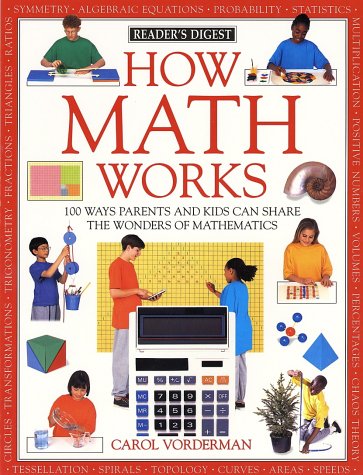-
Eye: How It Works
David Macaulay, Sheila Keenan
Paperback (Square Fish, April 14, 2015)Celebrated author-illustrator and master explainer David Macaulay brings his unique voice and style to high-interest nonfiction books for newly independent readers. How can you see that your shirt is on inside out? How do you see the soccer ball coming right at you? How do you know which players are on your team? It all starts with light--and with the amazing human eye. With his unique blend of informative text and illustration, David Macaulay shows how this extraordinary organ works to capture light and send signals to our brains. Joining Castle, Jet Plane, and Toilet, here's another illuminating nonfiction story for newly independent readers. O
O
-
The World's Weather
Michael Allaby
Paperback (Award Publications, Aug. 16, 2002)None
-
Eye: How It Works
David Macaulay, Sheila Keenan
Hardcover (David Macaulay Studio, April 14, 2015)Celebrated author-illustrator and master explainer David Macaulay brings his unique voice and style to high-interest nonfiction books for newly independent readers. How can you see that your shirt is on inside out? How do you see the soccer ball coming right at you? How do you know which players are on your team? It all starts with light--and with the amazing human eye. With his unique blend of informative text and illustration, David Macaulay shows how the anatomy of this extraordinary organ works to capture light and send signals to our brains. Joining Castle, Jet Plane, and Toilet, here's an illuminating nonfiction story about the senses for newly independent readers. O
O
-
Binoculars
Robin Koontz
Paperback (Rourke Educational Media, Aug. 1, 2014)Having trouble seeing something far away? Well, you may need a pair of binoculars! This book investigates the pieces of a pair of binoculars and explains how they combine to magnify far away objects. This book will allow students to make observations and/or measurements of an object’s motion to provide evidence that a pattern can be used to predict future motion.Filled with full-color photographs and reading comprehension activities, this book effectively engages students and complements the research of how an important piece of technology works. Binoculars allows students to make observations and gather information about a simple problem that can be solved through the development of a new or improved object or tool.Each 24-book features a teacher-focused concept, before- and after-reading activities, a photo glossary, and more, for a well-rounded understanding of the topic. The How It Works series lets young readers explore and research the technology and design of important, everyday things and how they are engineered. With simple-to-follow text and full-color photographs, these books easily engage young learners to discover the inner workings of complex objects and concepts. I
I
-
The Human Body
Kate Barnes, Steve Weston
Hardcover (Barnes & Noble Books, March 15, 1997)Our body is something we can easily take for granted. But if we ask ourselves how it works, a fascinating world emerges. How does the heart pump blood? How do our eyes see? What does the inside of a bone look like? How do we fight germs?
-
How the Universe Works
Heather Couper, Nigel Henbest
Paperback (Dorling Kindersley Publishers Ltd, Oct. 14, 1999)None
-
What Happens When You Flush?
Kelli Hicks
Paperback (Rourke Educational Media, Aug. 1, 2014)Have you ever thought about what really happens when you flush a toilet? In this book, students will learn all about this quirky subject and the different parts of this simple machine. From the bowl, the tank, the handle, and stopper, students will learn all about something we all do on a daily basis but don't really ever think about. This book will allow students to develop a simple sketch, drawing, or physical model, to illustrate how the shape of an object helps it function as needed.Filled with full-color photographs and reading comprehension activities, this book effectively engages students and complements the research of how an important piece of technology works. What Happens When You Flush? allows students to make observations and gather information about a simple problem that can be solved through the development of a new or improved object or tool.Each 24-book features a teacher-focused concept, before- and after-reading activities, a photo glossary, and more, for a well-rounded understanding of the topic. The How It Works series lets young readers explore and research the technology and design of important, everyday things and how they are engineered. With simple-to-follow text and full-color photographs, these books easily engage young learners to discover the inner workings of complex objects and concepts. O
O
-
Cotton Candy Machines
Charlotte Hunter
Paperback (Rourke Educational Media, Aug. 1, 2016)How does a cotton candy machine work? Learn about the science, technology, and engineering that make this sweet treat possible. This title supports NGSS standards for engineering design. Q
Q
-
How Math Works
Carol Vorderman
Paperback (Readers Digest, July 19, 1999)Full-color instructional photographs mark a look, from a popular continuing science series, at the delights of mathematics, offering tricks, puzzles, and special math activities designed to entertain while showing how math defines the universe. Reprint.
-
Go-Karts
Jeff Barger
Paperback (Rourke Educational Media, Aug. 1, 2016)Go-Karts bring the rush of racing to all ages. What makes it fun? What makes it turn? Learn the answers to these questions and more as you explore this marvelous machine. This title supports NGSS standards for engineering design. N
N
-
Drones
Jodie Mangor
Paperback (Rourke Educational Media, Aug. 1, 2016)Drones are unmanned flying machines that have many uses from scientific studies, to military, to recreation and fun. Learn how drones work and what these amazing machines can do. This title supports NGSS standards for engineering design. T
T
